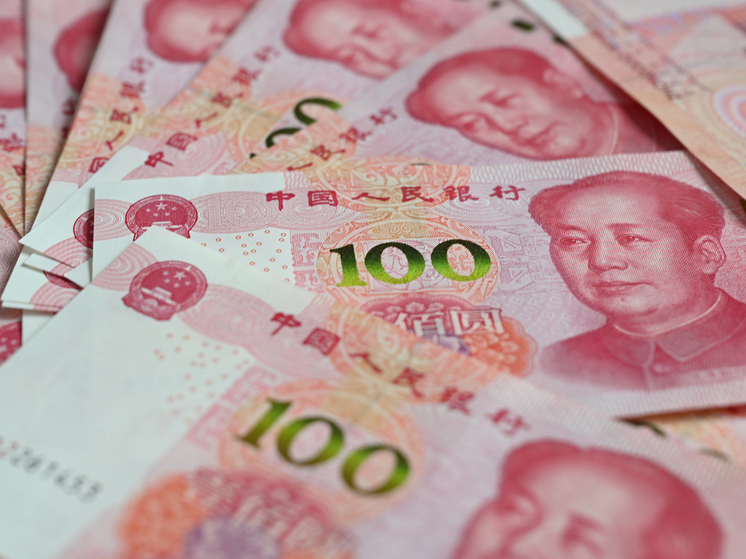Experts explained what caused the recent jumps in the Chinese currency rate
And yet, August is a tough month for the ruble. Not only has the domestic currency seriously lost ground to the dollar and the euro in recent days, but the yuan also strengthened sharply the day before, from 11.8 to 13 rubles per unit of Chinese currency. Then the ruble decided to win back its losses and by the end of the trading day on August 15 it was around 11.9 rubles per unit of Chinese currency. Experts told MK what events led to such strong fluctuations in the friendly currency on our market.

The Russian currency market continues to adapt to the dramatically changed trading conditions following the introduction of US sanctions against the Moscow Exchange and its infrastructure in June. But while the official exchange rates for the dollar and euro are now set by the Central Bank based on over-the-counter trading data, the yuan is still a welcome guest on the Moscow Exchange. However, according to Natalia Milchakova, a leading analyst at Freedom Finance Global, it is still too early to say that the dollar and yuan are moving in opposite directions in August. The factors holding back the growth of foreign currencies, including the yuan, against the ruble are the tough rhetoric of the Bank of Russia (a new round of key rate hikes is expected in September) and the reduction in yuan purchases by the Ministry of Finance in August under the budget rule.
«Due to sanctions against the Moscow Exchange, the market formation of exchange rates on the exchange is disrupted — in particular, in the case of the yuan, and other key world currencies have not been traded there since mid-June,» explains Dmitry Babin, an expert on the stock market at BCS World of Investments. «The rate is now formed on the interbank market, which is less liquid and more susceptible to sharp changes in quotes, especially in the case of concentrated demand for or supply of foreign currency.» Since the exchange yuan is effectively disconnected from foreign trade (cross-border payments) due to sanctions restrictions and voluntary bans by many global banks fearing secondary sanctions, it is difficult to assess the extent to which any other factors influence the exchange rate of the Chinese currency against the Russian one. However, the reduction in the inflow of currency into the country from exports, including that caused by the decline in oil prices, leads to a weakening of the ruble against key currencies, including the yuan, Babin noted.
«Of course, the situation with payments between Russian and Chinese partners affects the exchange rate,» continues the conversation, Artur Meinhard, head of the analytical department for global markets at Fontvielle Investment Company. «The main sellers on the domestic market, both on the exchange and over-the-counter, are exporters, and the buyers are importers. Thus, if transaction chains are disrupted, this affects the exchange rate. If rubles displace foreign currency in foreign trade settlements, this also affects the exchange rate. In both cases, a situation may arise when there is not enough yuan liquidity at the moment. Sharp fluctuations on the market may be associated with this.»
Problems with payments in yuan for imports are one of the main current factors influencing the exchange rate. The restrictions create additional difficulties for importers in acquiring yuan, provoke high commissions in settlements, which raises the yuan exchange rate. And this is precisely during the period of increased demand for purchasing goods before the autumn-winter season. «Moreover, many buyers of currency cannot buy it on the Moscow Exchange due to the sanctions risks in relation to it,» says Mark Goykhman, an analyst at the Capital Skills Financial Academy. — As a result, the yuan deficit is growing on the market as a whole. But on the Moscow Exchange, it is partially overcome by the supply of currency from the Central Bank. However, an increasing share of transactions is shifting to the over-the-counter market. This is due to the noticeable discrepancy between the yuan exchange rate on the Moscow Exchange and the interbank market rate, which has exceeded 13 rubles in recent days. And even after some decline by August 15, it is at the level of 12.5 rubles per yuan, that is, 4-5% higher than on the Moscow Exchange.»
The fact that the over-the-counter rate of the yuan is higher than on the Moscow Exchange indicates a persistent excess of demand over supply. This will put pressure on the ruble exchange rate, including on the exchange in the coming weeks. At the same time, the offer from the Central Bank of the Russian Federation at the end of the month will strengthen due to the tax period and increased sale of currency by exporters for payments to the budget. As a result of multidirectional reasons, if there are no sudden force majeure, the Chinese currency exchange rate on the Moscow Exchange in August will likely remain in the range of 11.7-12.2 rubles. On the over-the-counter market, such a corridor may be 11.9-12.8 rubles per yuan, Goykhman predicts.


